What to do if cucumbers don’t grow: feeding recipes
Cucumbers stop developing due to diseases and pests, excessive or poor feeding and other reasons. This culture is fastidious. One wrong step, and the summer resident will be left without a harvest. Let's look at why cucumbers don't grow and what to do in this situation.
Why do cucumbers grow slowly?
The main thing is to understand why the cucumbers stopped growing. Be sure to analyze the time of planting, proper care and growing conditions. There are many reasons for poor growth of cucumbers, but there is a smart solution for each.
Poor quality seeds
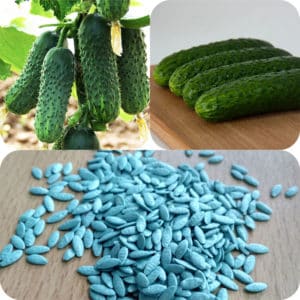
Low quality of planting material is determined during the period of growing seedlings. Poor quality seeds produce weak sprouts or do not germinate. Before planting in open ground, plants develop yellow leaves.
Experienced gardeners recommend purchasing seeds from trusted stores and giving preference to well-known manufacturers. Read reviews from other summer residents about a specific variety of cucumbers and draw the appropriate conclusions.
Reference. After purchasing seeds, you need to check and disinfect them. To do this, they are placed in a glass of water. Healthy ones will remain at the bottom, hollow ones will float to the surface. The latter are not suitable for planting. The treatment is carried out as follows: prepare a humate solution strictly according to the instructions, then place the seeds in it for 12 hours.
Violation of planting and collection deadlines
Cucumbers love warmth. You should not plant them in the first warm days after the frosts have subsided.The culture develops favorably at an average daily temperature of +15°C. If the planting deadline was missed, all that remains is to learn the lesson and not make a similar mistake next year.
An unharvested ripe crop interferes with the growth of a young ovary. There is not enough food for everyone, and yields are declining. Cucumbers need to be collected in a timely manner - daily or every other day.
Bad soil
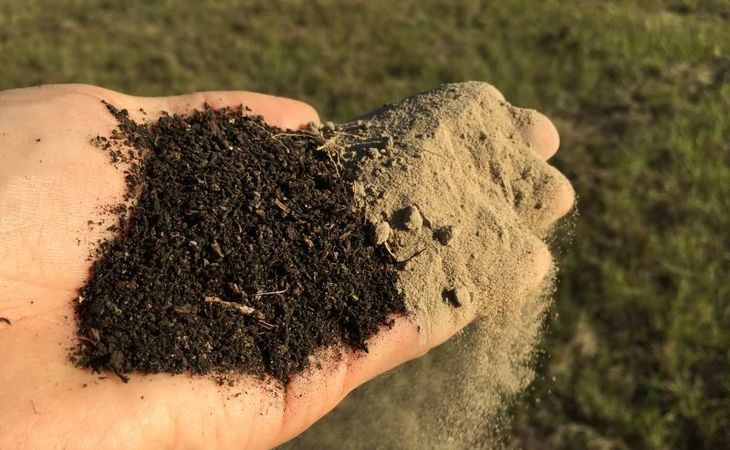
The crop needs fertile soil with lots of nutrients. It is not recommended to plant plants in acidic and non-nutritious soil. If litmus shows increased acidity of the soil, it is better to lime it first, in the fall, with dolomite flour, lime or ash. In the fall, apply fertilizer and dig the area well.
In a greenhouse, the soil requires regular updating. Also, you cannot plant cucumbers in one place every year. Otherwise, the soil will lose all nutrients, but will accumulate dangerous bacteria and pest larvae.
Reference. Cucumber beds in fresh manure are a popular way to grow in low spring temperatures. In cold weather, it begins to overheat, releasing heat to warm the seedlings. When warm weather arrives, the active phase of the process ends and the plants do not overheat.
Fit too tight
Excessive number of plants per 1 sq. m leads to their starvation, inability form fruits. The following tips will help you avoid this situation:
- Follow the planting density indicated on the seed package. On average, the gap between bushes is 20 cm, between rows - 50 or 60 cm.
- Tie the shoots to a vertical mesh or wire. This way they will grow upward and not interfere with neighboring bushes.
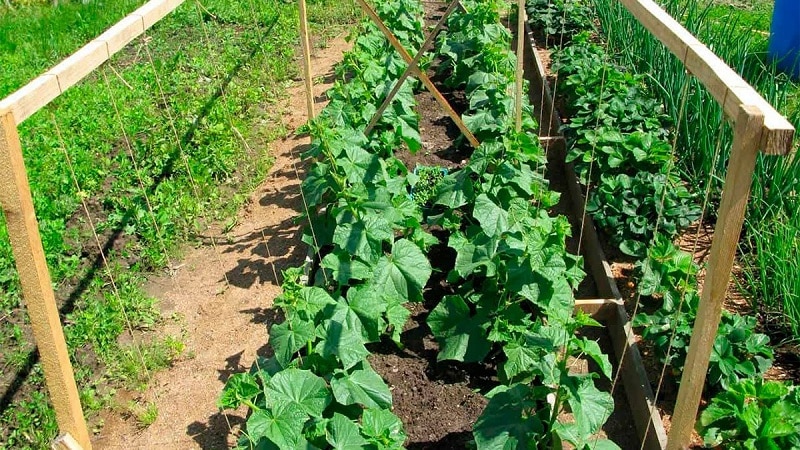
If an adult plant has changed color and does not form fruits, it is better to remove it.The bush is dangerous for other cucumbers because it accumulates various infections.
Incorrect or insufficient watering
Incorrect watering schedules and especially lack of moisture have a negative impact on cucumbers.
The recommendations are as follows:
- water the bushes three times a week when grown in open ground, six times in a greenhouse;
- in dry weather, water every day, preferably in the morning or evening;
- use only warm water with a temperature of +25°C;
- do not allow water to stagnate;
- After each procedure, loosen the soil.
It is important to remember that cold water causes a large number of male flowers to develop.
Bad feeding
A deficiency of nutrients slows down the growth of ovaries. During the fruiting period, cucumbers require more potassium and phosphorus. Fertilizing is applied once every 10-15 days at the rate of 1 liter per bush:
- ash infusion - dilute 15 g of ash in 10 liters of water, pour under the root;
- potassium sulfate - dissolve 30 g of the drug in 10 liters of water, pour it under the root;
- superphosphate - dissolve 40 g in 10 liters of water, apply to the root.
Cucumbers bloom but don't grow
If cucumbers bear fruit poorly or no fruit is visible at all, you should start pollinating. When growing bee-pollinated varieties, it is recommended to plant other plants and attract insects. If attempts are unsuccessful, transfer pollen with a brush from male flowers to female ones.
Attention! Experienced gardeners advise purchasing seed at the age of two or three years. The reason is that last year's fresh seeds produce plants with a large number of empty flowers, and only later female flowers are formed.
Diseases
This is a common cause of poor growth of cucumbers. It is recommended to choose varieties with good resistance to the main types of infections.
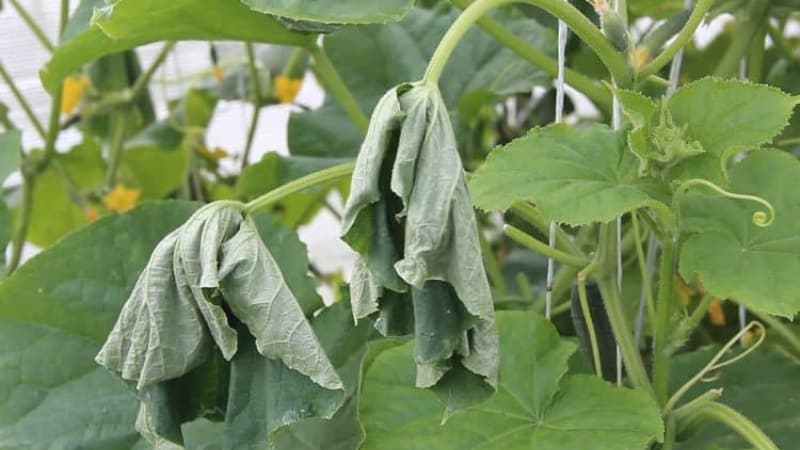
Fungal
Downy mildew is caused by the fungus Pseudoperonospora cubensis. Signs: rust, gray coating, complete drying of leaves. The consequences are a decrease in the quality and volume of the harvest. The reasons for the appearance are warm air, high air and soil humidity. Such conditions form in late June – early July.
For the fight, the drugs “Acrobat”, “Runman”, “Armethyl M72” are used, they are used strictly according to the instructions. Prevention includes maintaining crop rotation, providing comfortable conditions, watering only at the roots, and disinfecting the soil before planting.
Reference. According to the rules of crop rotation, it is better to plant cucumbers after nightshades (tomatoes, potatoes, peppers, eggplants), cruciferous vegetables (cabbage, radishes, etc.) and legumes (peas, beans). They are not planted after their fellow pumpkin plants: pumpkins, zucchini, melons and squash.
Powdery mildew caused by the fungus Erysiphe cichoracearum. The plant becomes covered with a white, scaly coating and dies. The reasons are hot and dry weather. Treatment is carried out with the drugs “Karatan 18%” or “Topaz 10%”. Heavily infected plants are dug up and destroyed.
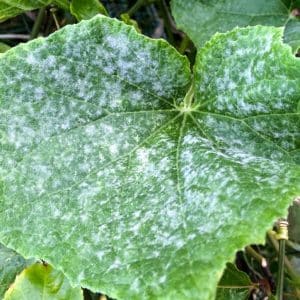
Anthracnose is caused by the fungus Colletotrichum orbiculare. This is an extremely dangerous disease. Signs: watery spots, holes on the leaves, fruits covered with concave spots. Reasons: high humidity, heat, wind, rain, insects. Fight - spraying with Bordeaux mixture, colloidal sulfur, copper oxychloride. Prevention - disinfection of seeds, destruction of plant residues, deep digging of the soil, adherence to crop rotation.
Bacterial
The most dangerous and common disease is angular spot, or bacteriosis. The carrier is the bacterium syringae pv. lachrymans. It forms protective capsules, increasing the survivability of the pathogen.
Signs are small weeping spots on the cotyledons, yellowing of leaves and necrosis, wilting of the affected areas, and the appearance of holes. Treating plants is very difficult. Fungicidal preparations such as “Kuproksad”, “Abiga-Pik” or “Fitolavin” are used.
Prevention:
- choose resistant varieties - Masha, Murashka, Lesha, Octupus, Competitor and so on;
- feed strictly according to schedule;
- disinfect seed, soil, tools;
- burn old plants from the entire site;
- perform autumn digging to destroy bacteria;
- timely treatment with fungicides;
- Water only with warm water.
In case of serious damage, the plants are dug up and burned.
Viral
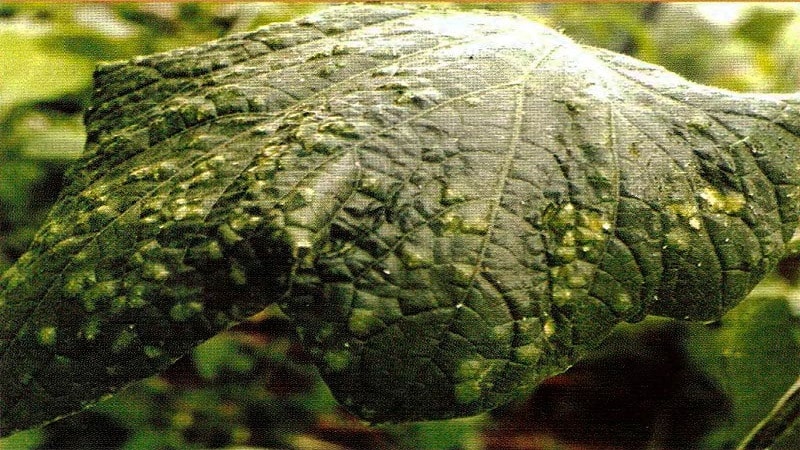
There are two particularly dangerous viruses:
- Ordinary mosaic. CMV virus (Cucumber mosaic cucumovirus). Signs are chloratic spots on the leaves, their deformation and wrinkling. The reasons are low temperature, non-compliance with crop rotation. Fight - "Farmayod" on a water basis. A heavily infected crop is dug up and destroyed.
- Green mosaic. Cucumber green mottle mosaic tobamovirus (CGMV) virus. Signs: wrinkled leaves, light veins, wilting of the plant, the appearance of spots in the form of a mosaic. The reason is a sharp increase in temperature. There is no point in fighting. Plants are dug up and destroyed. Prevention - disinfection of seeds, compliance with planting and crop rotation schemes, fertilizing.
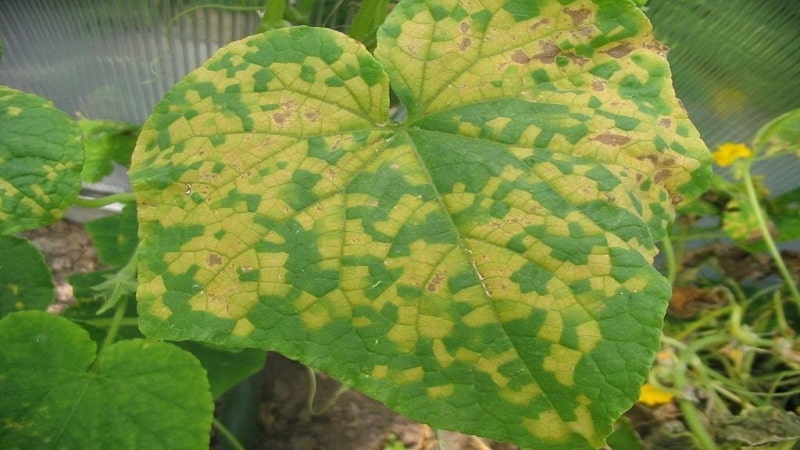
Pests
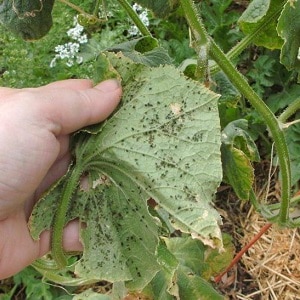
The most dangerous enemies of cucumbers:
- Aphid. Insects suck the juice from plants and can destroy all plantings. Use the drug "Iskra" or "Fitoverm".
- Spider mite. Drinks all the juice from the leaves, completely destroying the plant. Modern insecticides are used.
- Slugs. Outwardly harmless animals become the main cause of serious diseases.They destroy most of the plantings. They use chemicals: “Metaldehyde”, iron sulfate. Manual collection is effective.
- Medvedki. These creatures gnaw through the stem and root system. The plant quickly withers and dies. The drug "Medvedko-s" is used.
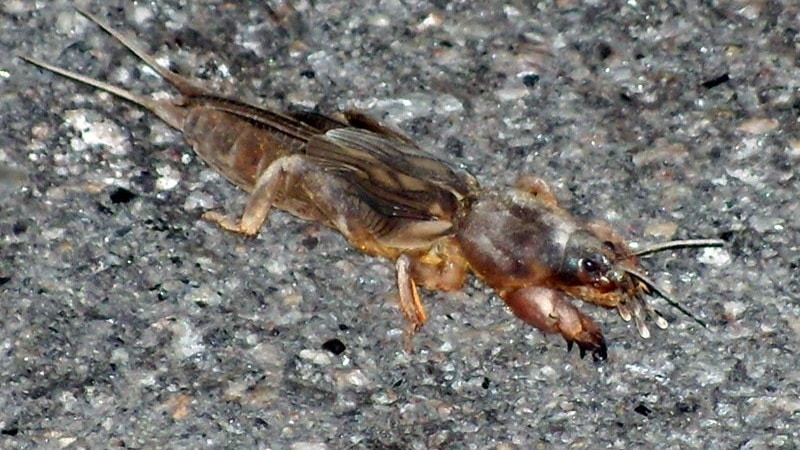 Medvedka
Medvedka
Other Possible Causes
There is another reason - lack of lighting. Cucumber culture loves light very much, especially needs abundant lighting during the period of seedling growth. Lack of sun leads to stretching of sprouts and yellowing of leaves.
When growing plants in a greenhouse, you should not thicken the plantings and tie them up in a timely manner. If seedlings are being prepared, place the boxes in a well-lit room.
What to do and how to feed cucumbers if they don’t grow
For the normal development of cucumbers, it is important to follow the recommendations described above. Plus, feed them correctly.
Chemical fertilizers
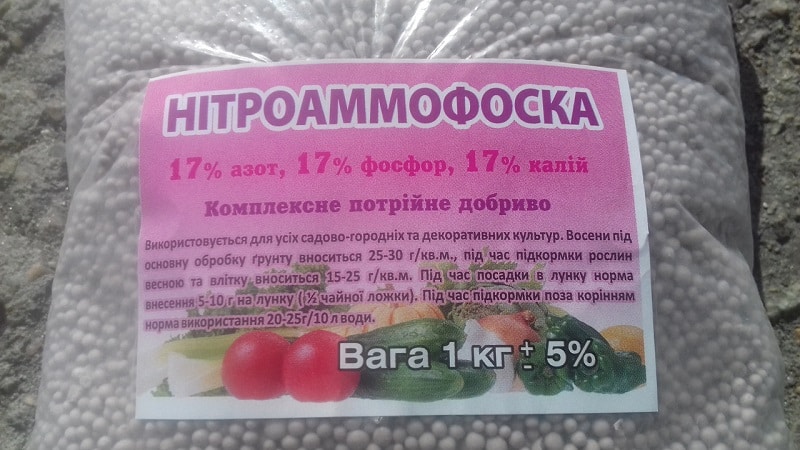
They are complex. These complex mineral fertilizers contain nitrogen, potassium and phosphorus in various proportions and are enriched with additional elements.
Popular chemical fertilizers:
- Nitroammophoska. Apply to heavy soil in the fall and to light soil in the spring. Use according to instructions.
- Nitrophoska. They are introduced into the soil throughout the entire period of crop growth, strictly according to the instructions.
- Ammophos. It replaces nitrophoska well. Used according to the same principle.
Biological drugs
Experienced summer residents prefer to use BioBak BB-MMS fertilizer. The product contains important nutrients necessary to stimulate the growth of cucumbers and high-quality fruiting. It is used as a preparation for watering, irrigating plants and pre-sowing seed treatment. Take into account the manufacturer's recommendations.
Folk supplements
These are organic types of fertilizers. Most popular:
- Compost. Ripens within seven months. Plant residues of crops and food waste are used as a basis. Apply in the fall followed by digging up the soil.
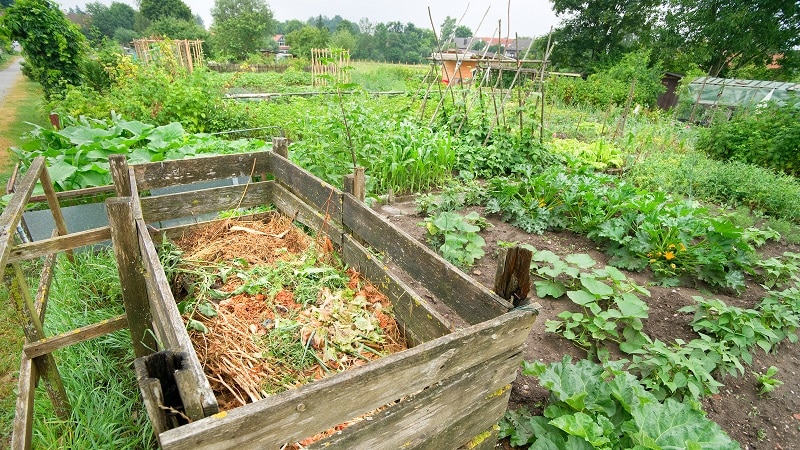
- Bird droppings. Used when plowing the land. The norm is 5 kg per 1 sq. m plot. Frequency: once every four years. For additional spring and summer feeding, one part of the litter is diluted in 20 liters of water and watered between the rows.
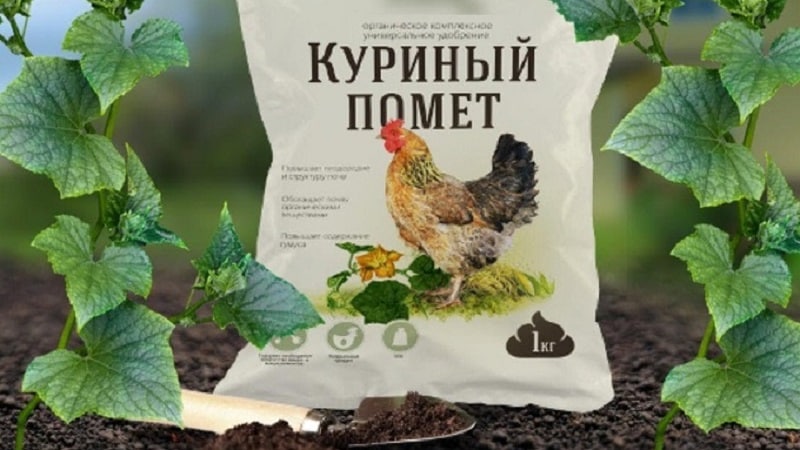
- Wood ash. Spray on the surface of the row spacing followed by loosening in an amount of 200 g per 1 square meter. m. In the form of a solution - 100 g is diluted in 10 liters of water, 0.5 liter is poured under each bush.
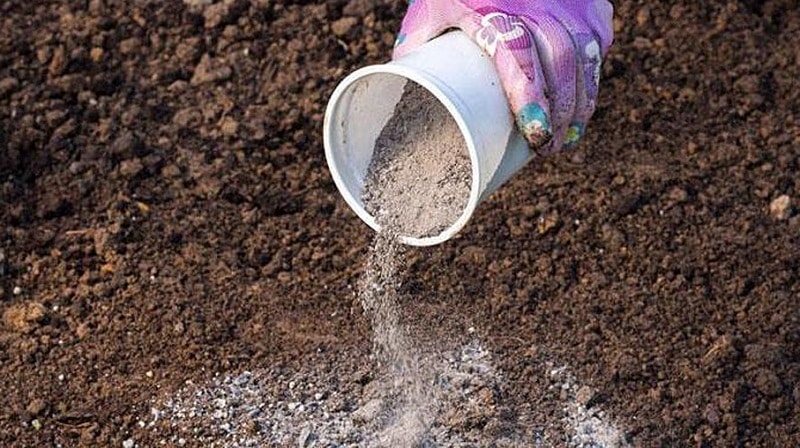
Eliminating causes that hinder growth
Fixing a problem is always more difficult. It's better to prevent it. It is imperative to observe crop rotation, disinfect seed material, carry out autumn soil preparation, and use preparations.
It is recommended to dig up and destroy diseased plants. This method will allow you to preserve the remaining harvest and focus your energy on increasing the fruiting of healthy cucumbers.
Important recommendations: how to prevent slow growth of cucumbers
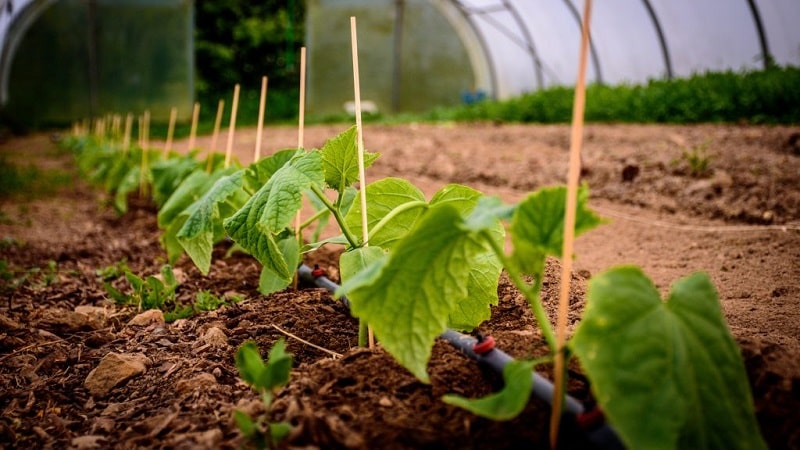
The tips are as follows:
- Renew the soil in the greenhouse every two years. It is necessary to remove the top layer of soil and replace it with a more fertile one. Otherwise, the soil will accumulate bacteria and viruses.
- Planting cucumbers in open ground. Send the plant to a new place only at the age of 30 days. If you do this later, the root system will be damaged.
- Maintain a distance of at least 20 cm between seedlings. Otherwise, the crop will die from lack of light and too wet soil.
- Carry out systematic watering. Avoid drought or stagnation of water.
- Purchase only high-quality seeds from trusted companies. The age of the culture is at least three years.
Conclusion
It is not difficult to get a rich harvest of cucumbers if you follow the basic recommendations of experienced gardeners. Be sure to inspect the crop for diseases and insects. Do not forget about the correct schedule of watering and fertilizing.